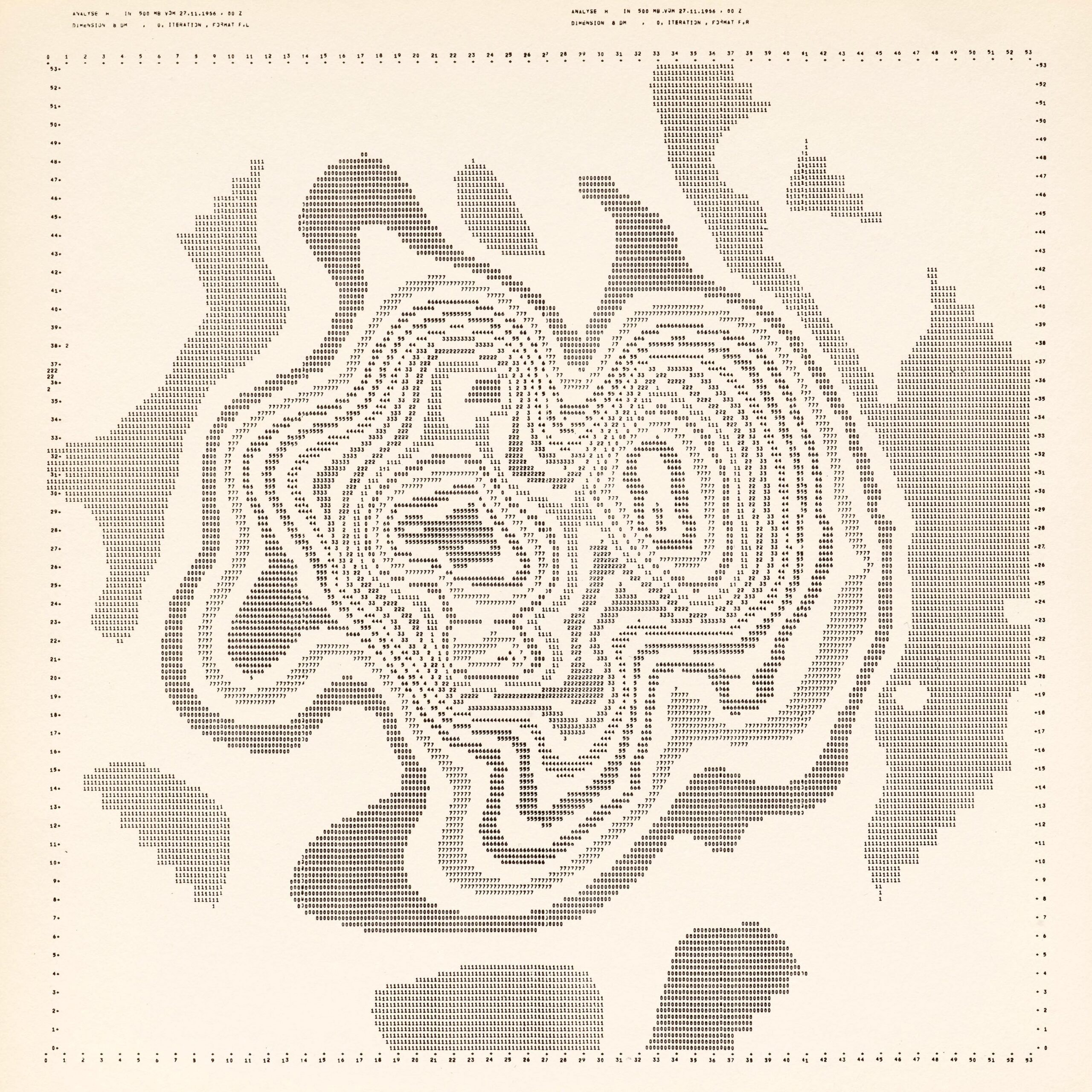
Timm Ulrichs, in «edition et» no. 3, Edited by Bernhard Höke, Verlag Christian Grützmacher, Berlin, 1967. Via garadinervi.

Timm Ulrichs, in «edition et» no. 3, Edited by Bernhard Höke, Verlag Christian Grützmacher, Berlin, 1967. Via garadinervi.
Military ASCII art from 1967 using a custom system that combined US ASCII and vector graphics, fit for 2400 baud distribution. More info also here.
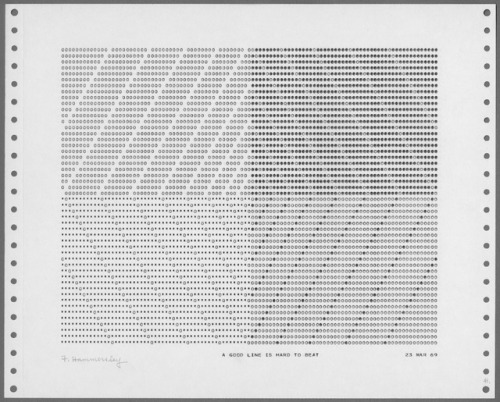
Frederick Hammersley, A Good Line is Hard to Beat, 1969, L. A. Louver, Venice, CA / Frederick Hammersley Foundation
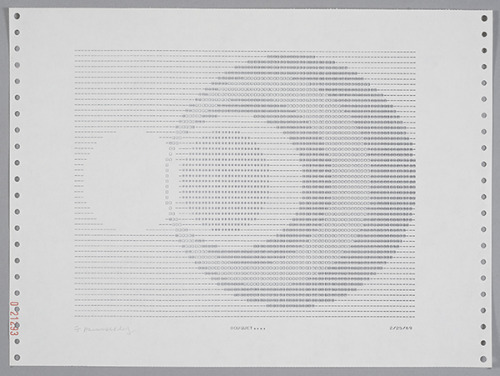
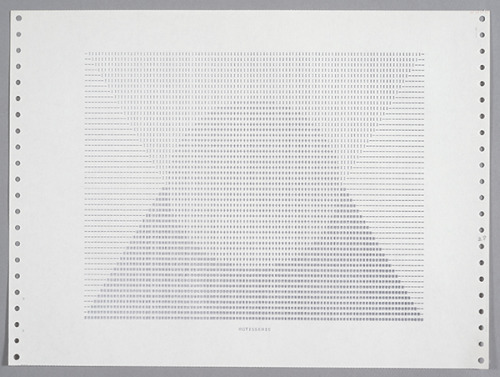


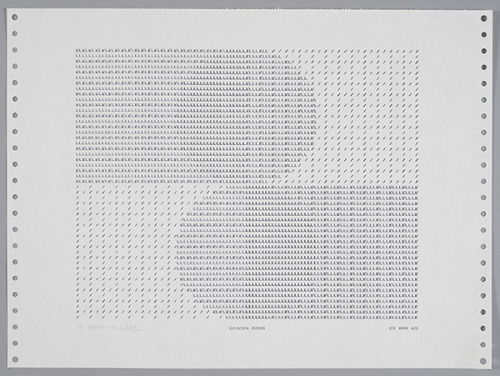
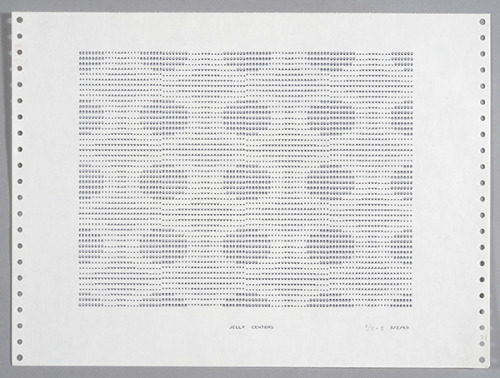
ASCII art by Frederick Hammersley, 1969. Made on an IBM-computer (which used EBCDIC and not ASCII encoding), and:
The alphanumeric characters we could ‘draw’ with were: the alphabet, ten numerals and eleven symbols, such as periods, dashes, slashes, etc….
h/t: Robert Doerfler
Mona By The Numbers
Probably the earliest example of computer-generated text art, put together in 1964 by H. Philip Peterson:
In 1964, H. Philip Peterson of Control Data Corporation (CDC) used a CDC 3200 computer and a “flying-spot” scanner to create a digital representation of the Mona Lisa. The image contained 100,000 pixels that were plotted using numerals, sometimes overprinted, to approximate the required density and took 14 hours to complete.Similar digital images of popular art, cartoon characters, and even nudes adorned the walls of corporate offices, labs, and computer centers throughout the 1960s.
You can find out more about the ‘Digital Mona Lisa’ here, and there is an online viewer for closer inspection here
Kitty by N Konstantinov and others, 1968.
A group of russian physicists and mathematicians with N.Konstantinov in the head of it created mathematic model of the cat and its moving and realized this model in the program for the computer “BESM-4”. Computer printed hundreds of frames on the paper using alphabet symbols and then they were converted to the cinefilm.
Source
Post updated in 2024.